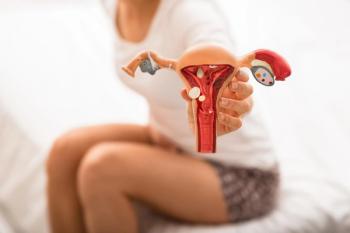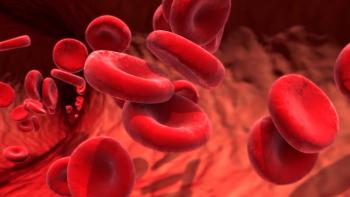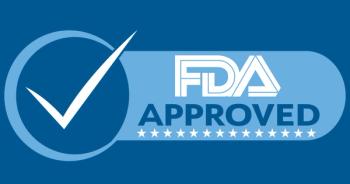Takeaways
- Data presented at The Menopause Society’s 2025 Annual Meeting emphasized individualized, evidence-based care across hormone and nonhormonal menopause treatments.
- Studies highlighted safety findings for elinzanetant, variations in prescribing patterns by provider specialty, and new data linking hormone therapy to autoimmune risk.
- Experts underscored the importance of clinician education, multidisciplinary collaboration, and patient-centered approaches to improve menopause management.
At The Menopause Society’s 2025 Annual Meeting, held October 21–25 in Orlando, Florida, clinicians and researchers presented new findings on hormone therapy, nonhormonal treatments, vulvar health, and clinical practice patterns in menopause care. Key presentations emphasized individualized treatment approaches, the importance of education across specialties, and the continued need for evidence-based strategies to optimize women’s health through midlife and beyond.
James A. Simon, MD, CCD, MSCP, IF, FACOG, clinical professor of Obstetrics and Gynecology at George Washington University in Washington, DC, presented pooled US safety data showing that the nonhormonal agent elinzanetant was well tolerated over one year of treatment in menopausal women experiencing vasomotor symptoms (VMS).
“It shows that elinzanetant is incredibly safe with very few adverse events or treatment-emergent adverse effects,” Simon said. No liver safety signal was detected—an important finding given previous regulatory concerns with similar compounds.
The most common treatment-emergent events were mild, including headache and COVID-19, and were not related to the study drug. Simon emphasized that alleviating VMS can improve multiple domains of health. “Hot flashes and night sweats disturb sleep, disturb work productivity, disturb energy, well-being, etc.,” he said. “Just intervening on the issue of hot flashes and night sweats is not just about hot flashes and night sweats—there are lots of downstream benefits.”
Melissa Mauskar, MD, dermatologist and associate professor of dermatology and obstetrics and gynecology at UT Southwestern, addressed diagnostic and management challenges in vulvar disorders. She noted that most patients present with more than one condition, such as genitourinary syndrome of menopause (GSM), vulvovaginal atrophy, or dermatitis. “Most patients have more than one thing going on,” she said, emphasizing the need to differentiate GSM from other causes of itching and discomfort.
Mauskar underscored the importance of thorough physical examination, particularly in the telemedicine era, and described clinical signs of lichen sclerosus. She also encouraged clinicians to normalize discussions about sexual and vulvar health. “A lot of patients have been to several doctors and have waited a long time before they actually feel comfortable bringing this up,” she said.
Her presentation included practical advice on topical therapies and patient education. “We actually go through that in my clinic,” Mauskar said. “I’ll show them that a lentil size or half of a pea actually is enough to cover their vulva and perianal area.” She also highlighted pharmacist education to improve the safe use of topical steroids and prevent long-term complications. Mauskar concluded by calling for multidisciplinary collaboration and expanded clinical research in vulvar health.
A retrospective cohort study presented by investigators from Wake Forest University School of Medicine examined how provider specialty and training affect pharmacologic management of menopause symptoms. The analysis included 5,491 women aged 40 to 55 years who had an outpatient encounter related to menopause between 2016 and 2023.
Among participants, only 17.1% received pharmacologic treatment for menopause symptoms. Patients treated by obstetrics and gynecology specialists were significantly more likely to receive systemic estrogen than those treated by internal medicine, family medicine, or endocrinology providers. In contrast, selective serotonin reuptake inhibitors were more frequently prescribed by non-ob-gyn specialties.
Variation was also observed by provider type: midwives and nurse practitioners were more likely to prescribe systemic estrogen, while physician assistants, nurse practitioners, and residents more often prescribed antidepressants.
Lead author Anna Caroline Cochrane, MD, MSCR, noted that “menopause is a topic that is often only minimally covered during our training,” emphasizing the need for standardized education. Stephanie Faubion, MD, MBA, medical director of The Menopause Society, added that expanded, evidence-based training is essential to ensure consistent and high-quality menopause care.
New data presented by Xuezhi (Daniel) Jiang, MD, PhD, professor of obstetrics and gynecology at Drexel University College of Medicine, explored the relationship between hormone therapy and autoimmune disease risk in postmenopausal women. The retrospective analysis used the TriNetX Global Health Research Network to examine nearly 1.8 million women, comparing those who received estrogen therapy with those who did not.
Over follow-up periods of 5 and 10 years, hormone therapy users showed a higher incidence of autoimmune diseases than non-users (6.7% vs 5.3% at 5 years; 8.6% vs 6.7% at 10 years). The overall hazard of developing an autoimmune condition was also elevated (hazard ratio 1.33; 95% CI, 1.32–1.35).
Increased risk was observed for most autoimmune diseases analyzed, with the exception of Graves’ disease and autoimmune hepatitis. “Our study found a statistical link between hormone therapy and autoimmune diseases, but the actual increase in absolute risk is relatively small,” Jiang said. “More research is needed before drawing firm conclusions.”
Faubion emphasized the need for individualized care: “Although hormone therapy continues to be the first-line therapy for managing menopause symptoms, it is not for everyone.”
Michelle Wise, MD, MSc, FRSCS, FRANZCOG, consultant gynecologist and associate professor at the University of Auckland, presented findings supporting the levonorgestrel intrauterine device (IUD) as an effective option for endometrial protection in women receiving estrogen therapy. While the IUD is approved for this purpose in New Zealand, global data remain limited.
“When we actually looked into the research of the evidence base for that, there’s actually only a handful of trials,” Wise said. Because endometrial hyperplasia and cancer are uncommon, larger studies are needed to confirm outcomes.
Wise emphasized patient counseling and choice, noting that side effects such as spotting and mild discomfort are typically temporary. “I really emphasize that point because I don’t want them to get so annoyed by that symptom and expected side effect that then they’ll want it removed,” she said.
She added that the levonorgestrel IUD offers practical advantages for women transitioning from perimenopause to menopause, especially those who already have an IUD in place. “They might start getting hot flashes, and then it’s easy to just keep it in, so you’ve got that progesterone protection already, and then you just add in the estrogen,” Wise said.
Conclusion
Presentations at The Menopause Society’s 2025 Annual Meeting underscored continued progress in optimizing menopause management through evidence-based, individualized care. Topics ranged from emerging nonhormonal therapies and hormone therapy safety to multidisciplinary vulvar care and expanded provider education. Across sessions, investigators and clinicians highlighted the importance of research collaboration, informed counseling, and patient-centered strategies to improve quality of life for women throughout the menopause transition.











